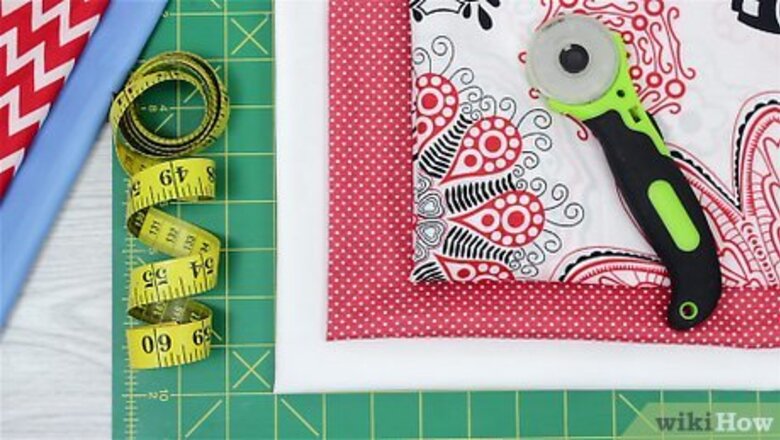
views
Here are a few pointers to help you begin this rewarding activity.
Construction

Choose the materials you will work with. Different fabrics have unique properties which determine how they will get used. Generally speaking, Cotton fabric is best for hand quilting, although other fabrics are sometimes used.
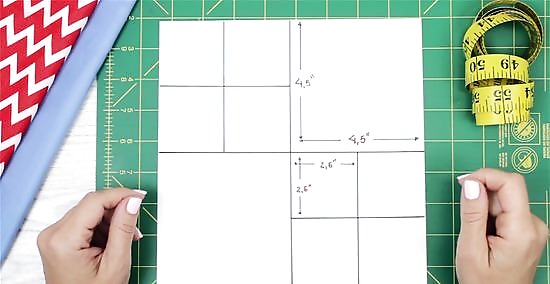
Choose the block pattern(s) you will use. Quilts are created section by section (called "blocks"). You do not need to carry a blanket around with you... only the materials for making one block, or one fraction, of the blanket at a time.
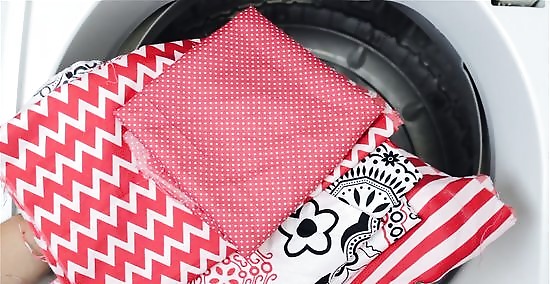
Launder and iron the fabrics.

Measure and cut out your pattern pieces. Most quilt patterns will give you a list of needed amounts of fabric yardage to complete a quilt in various common bed sizes... single, full, queen, king, etc.

Keep a diagram of your chosen block pattern handy. Some patterns will specify the best order of assembly for the block pieces... follow the pattern suggestions, as they generally work best.
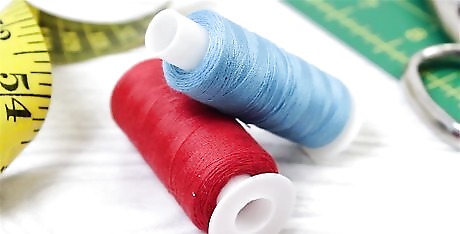
Begin sewing.
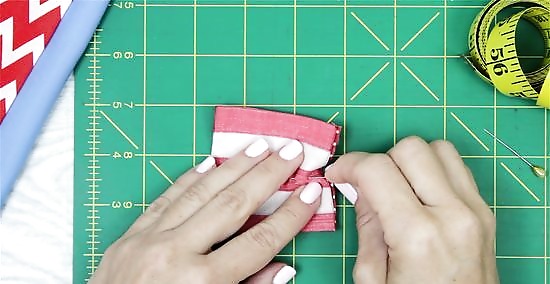
Line up the seam edges of your first two pieces of fabric with the "right" or printed, sides of fabric facing each other. Pin them, if need be.
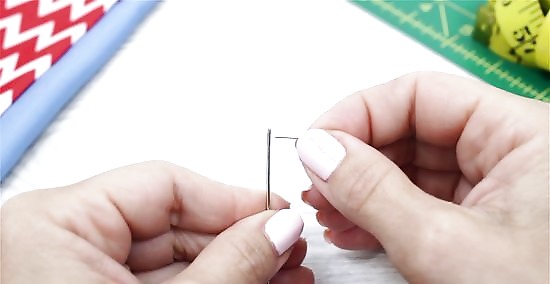
Thread a hand sewing needle with 20–40 inches (50.8–101.6 cm) of thread and tie a knot in one of the ends.
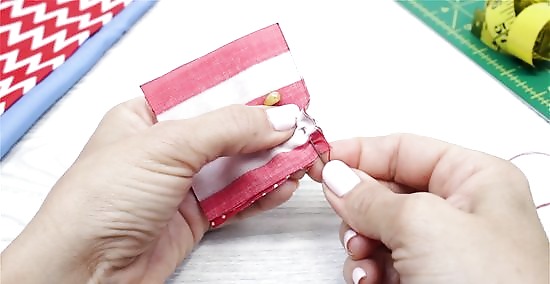
Stitch the pieces of fabric together, leaving a ⁄4 inch (0.6 cm) seam allowance and taking care to sew in a straight line. Tie off the end of the thread when finishing each seam.

Press the seam allowances to one side. This will make them stronger than if you ironed them "open".
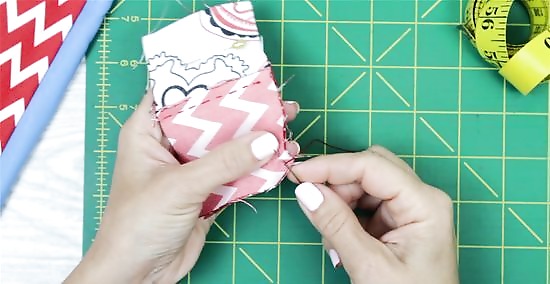
Continue to sew consecutive block pieces together in the order suggested by the pattern instructions, pressing each seam open and flat, until you have completed a "block" of sewing.

Set the block aside, and begin on the next block.
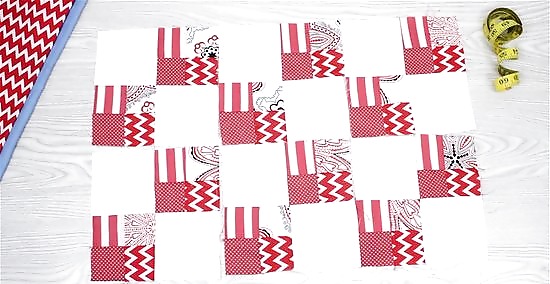
Lay all completed blocks out in the pattern as a final check before joining them together. Generally, you will sew the blocks directly together or you will sew a lattice work of a contrasting color between the blocks. In either case, you will sew blocks together into long strips or rows and then sew the strips/rows together to make a finished quilt top.
Quilting
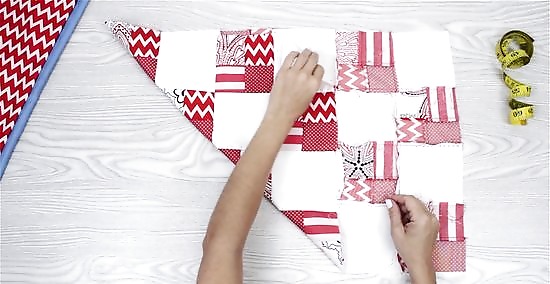
Lay your quilt top face down on a flat surface.

Lay a layer of batting atop the face down quilt.

Lay your backing material atop the batting.
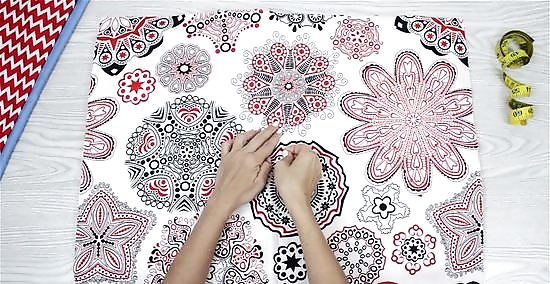
Pin or baste the layers together, starting with a line down the center of each axis and then more basting lines parallel to the center line, spaced approximately 18 inches (45.7 cm) apart.
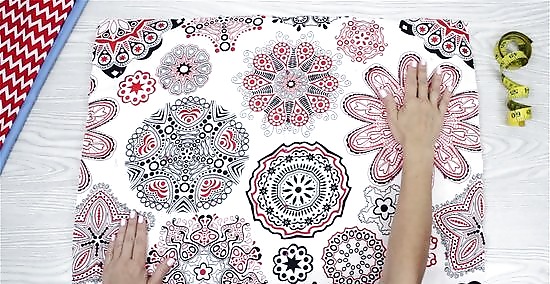
Check for wrinkles or tucks and re-baste if necessary.

Place your basted quilt on a frame to stretch it smoothly as you do the actual "quilting" or stitching of the layers together with small stitches.

Quilt "in the ditch" along seam lines between colors of fabric, or do an "overall" quilting design which ignores the quilt design and simply stitches over the fabric in its own pattern. "Overall" quilting can complement the fabric prints... for example, a fabric with a floral print could be quilted with an overall design of flower pots and spades or gardening tools.
Finishing
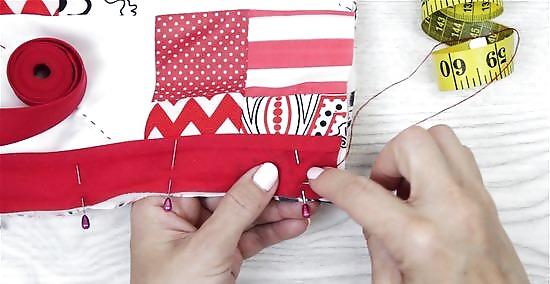
Edge the quilt with either a border or with bias tape, taking care to miter the corners carefully.
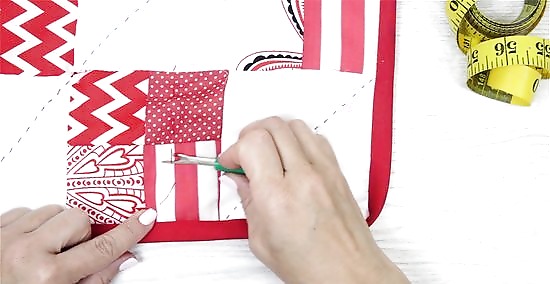
Remove the basting stitches.

Display proudly.




















Comments
0 comment